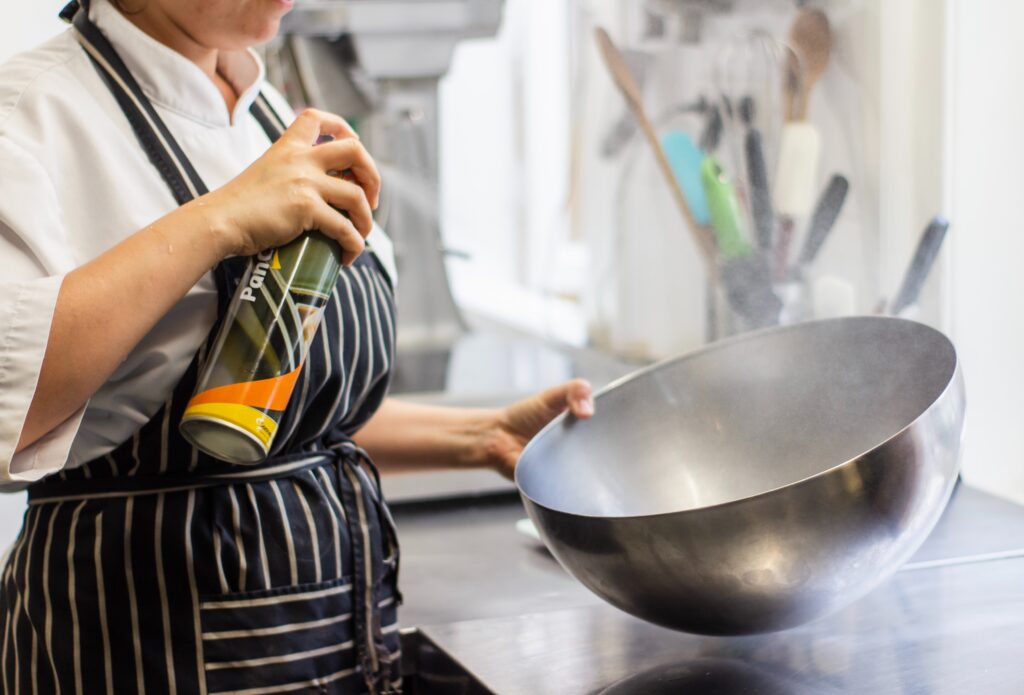It is challenging to avoid visualizing a seemingly infinite stretch of the shiny metal surface when imagining a commercial kitchen. Not to mention the fact that restaurant cookware and flatware are composed of metal as well.
Stainless steel and aluminum are the most often utilized materials in the food service sector. Stainless steel is, of course, the more widely utilized material, with many grades including 304, 316, 409, and 439 being used for manufacture, preparation, and presentation.

Grades 304 and 316 of stainless steel, which come in four varieties, are the most popular. It’s not the only metal that may be used in food, though. Cast iron and copper are also utilized in the food service sector in addition to aluminum.
Stainless steel
Stainless steel is an alloy of iron and at least 11% chromium, unlike normal steel. This makes stainless steel resistant to rust, scratches, and dents. It should therefore come as no surprise that its resistance to abuse makes it the ideal choice for use as cooking equipment. As it can endure mild amounts of exposure to moisture, chemicals, and food, it is a logical choice for equipment that comes into touch with food.
Usually, nickel is added to the mixture to make the metal harder, and occasionally, metals like molybdenum are added to make steels for specialized applications.
The different varieties of stainless steel that are used to make food service equipment can be boiled down to the components they contain and their proportions.
300-series stainless steel
Typically composed of 18 percent chromium and 8 percent nickel by mass, respectively. The crystal arrangement of the alloy’s molecules renders it austenitic and consequently nonmagnetic.
Due to its resistance to corrosion caused by a wide variety of chemicals and its ability to be electropolished to a smooth, bright, and easy-to-clean surface, grade 304 is the most used stainless steel grade. Due to its higher molybdenum concentration, Grade 316 is the second most common stainless steel because it is more resistant to chlorides like salt.
400-series steels
Contains chromium, nickel, and other metals in trace levels. It is magnetic because the molecules are organized in a ferritic or martensitic crystal structure.
Aluminum
After stainless steel, this is the second most prevalent metal. It is not only less expensive, but also softer and less resistant to abuse. When searching for a lightweight, inexpensive, and rust-resistant material, aluminum is typically chosen. Additionally, it is alloyed with other elements to increase its strength and longevity.

Typically utilized for cooking surfaces like baking trays.
There are three primary varieties of aluminum utilized in the commercial kitchen of restaurants and kitchen equipment and in such cases, commercial kitchen consultants help you with the right variety to choose from. All of which has manganese, silicon, iron, and copper added.
Cast iron
A basic iron and carbon alloy. Gas burners, grates, and radiants are typical examples of robust, weighty components. It is frequently used outside of industrial kitchens because it retains and transmits heat well. Ideal for frying, baking, and adding a touch of rustic appeal.
Copper
Highly valued for its capacity to conduct heat and electricity. In addition to being ideal for cooking and roasting, copper pots and pans can lay securely on the burner while remaining light enough to be lifted when full of food or liquid.
Galvanized steel
A type of low-cost steel protected against rust by a zinc coating. Frequently used to construct the bottom panels of kitchen equipment, the legs and support components of economical work tables, and utility containers like pails and trash cans.
HPG Consulting uses top-quality materials and follows sustainable practices in producing
At HPG Consulting as commercial kitchen consultants take pleasure in generating the greatest value and return on investment for every dollar spent. After working with a variety of clients, some of which had stringent financial restrictions, HPG Consulting is aware of the need to keep project costs reasonable without sacrificing the quality of materials and deliverables.